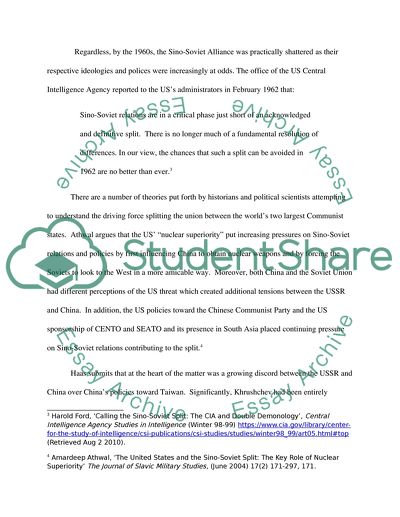Cite this document
(“The Second Taiwan Strait Crisis and the Sino-Soviet Split Essay”, n.d.)
Retrieved from https://studentshare.org/history/1569030-sino-soviet-relations-1958-1962-the-second-taiwan-strait-crisis-and-the-sino-soviet-split
Retrieved from https://studentshare.org/history/1569030-sino-soviet-relations-1958-1962-the-second-taiwan-strait-crisis-and-the-sino-soviet-split
(The Second Taiwan Strait Crisis and the Sino-Soviet Split Essay)
https://studentshare.org/history/1569030-sino-soviet-relations-1958-1962-the-second-taiwan-strait-crisis-and-the-sino-soviet-split.
https://studentshare.org/history/1569030-sino-soviet-relations-1958-1962-the-second-taiwan-strait-crisis-and-the-sino-soviet-split.
“The Second Taiwan Strait Crisis and the Sino-Soviet Split Essay”, n.d. https://studentshare.org/history/1569030-sino-soviet-relations-1958-1962-the-second-taiwan-strait-crisis-and-the-sino-soviet-split.


